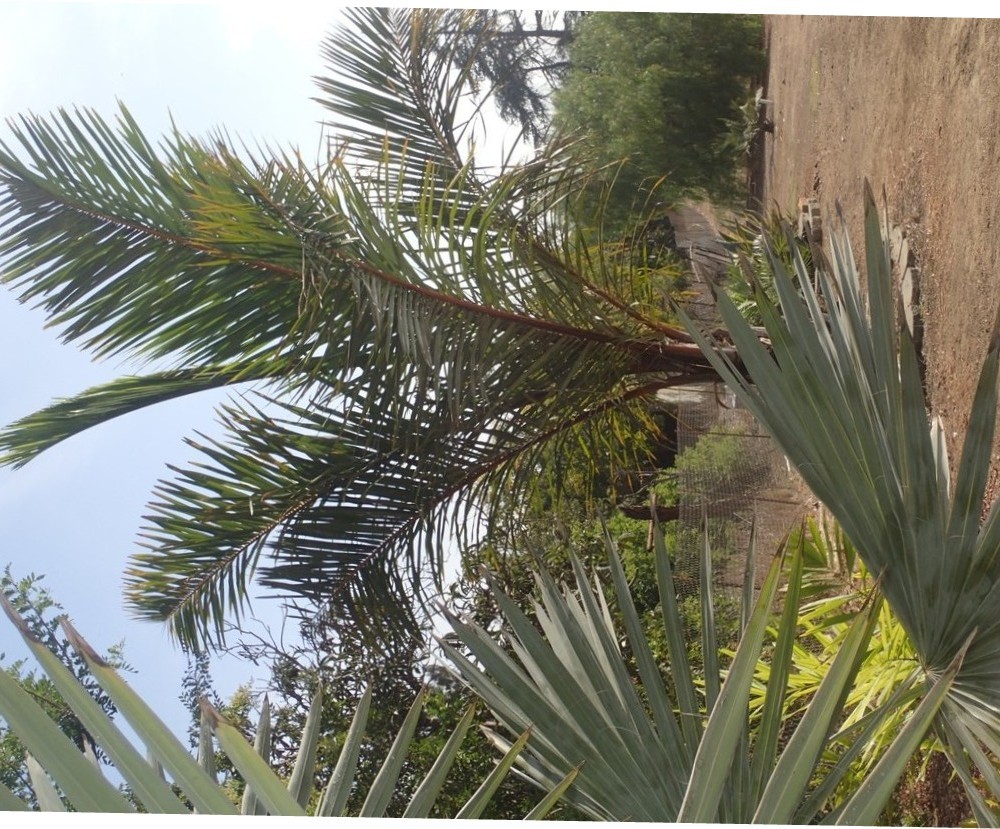Kosi palm
(Raphia farinifera)

Description
Raphia farinifera is a tropical African palm tree occurring in lowland riparian and swamp forest, also around human habitations and cultivated locations, on stream banks and other moist situations at altitudes of 50–1000 m. Found in Angola, Benin, Burkina, Cameroon, Gambia, Ghana, Guinea, Ivory Coast, Kenya, Madagascar, Malawi, Mauritius, Mozambique, Nigeria, Réunion, Senegal, Seychelles, Sierra Leone, Tanzania, Togo, Uganda, Zambia and Zimbabwe, and naturalised in Madagascar. Its generic epithet is derived from raphis = 'needle', probably in reference to the 4 mm long yellowish spines on the margins and main veins of the leaflets. The specific name refers to a type of starchy flour obtained from the trunk pith – farina = 'starch', fera = 'bearing'. It is one of 26 species currently recognised, all native to Africa and Madagascar, with one species, R. taedigera found in Central and South America. Their fronds – botanically a single leaf – are among the longest in the plant kingdom, those of R. regalis reaching a length of 25 m. The trunk of this species is up to 10 m tall and about 1 m in diameter – the topmost fronds reach up a further 10 m – and sheathed in persistent leaf bases. Trees occur singly or, because of suckering, in dense clumps. The pendant inflorescences are massive and some 3 m in length, bearing unisexual flowers – male flowers at the distal end, female flowers at proximal with first order branches of 13–32 rachillae very close-packed in almost one plane (see illustration). Raphia spp. are monocarpic or hapaxanthic, flowering and fruiting only once, followed by death. Raphia farinifera flowers when the tree is some 20–25 years old, and it takes a further 5–6 years from flowering to ripe fruit, all fruits ripening together. The fruit is oblong to ovoid, 5–10 cm in length, with imbricate, glossy, golden-brown scales. This species is strongly associated with human migration throughout the tropics, leaves being used for thatching, the leaflets for plaiting, and the midribs being a useful material for hut construction, furniture, fences, sweeping-brushes, floats for fishing nets, ladders and poles. The epidermis on the upper surfaces of young leaflets yields raffia, a strong, commercially important fiber, used as cordage in horticulture and handicrafts, and in weaving hats, baskets, mats, shoes, bags, fishing nets, hammocks, curtains and textiles. The midveins of the leaflets are used to construct fishing nets and articles for domestic use.
Taxonomic tree:







